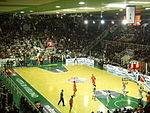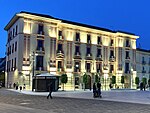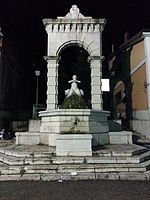Stadio Partenio-Adriano Lombardi
AvellinoBuildings and structures in the Province of AvellinoFootball venues in ItalyItalian sports venue stubsMulti-purpose stadiums in Italy ... and 4 more
Serie A venuesSports venues completed in 1973Sports venues in CampaniaUS Avellino 1912

The Stadio Partenio-Lombardi is a multi-purpose stadium in Avellino, Italy. It is currently used mostly for football matches and is the home of U.S. Avellino 1912. The stadium was built in 1973 and holds 26,308.On 9 June 2011 the stadium was dedicated to former Avellino player Adriano Lombardi.
Excerpt from the Wikipedia article Stadio Partenio-Adriano Lombardi (License: CC BY-SA 3.0, Authors, Images).Stadio Partenio-Adriano Lombardi
Via Giovanni Feola, Avellino
Geographical coordinates (GPS) Address External links Nearby Places Show on map
Geographical coordinates (GPS)
| Latitude | Longitude |
|---|---|
| N 40.926944444444 ° | E 14.7925 ° |
Address
Stadio Partenio-Adriano Lombardi
Via Giovanni Feola
83100 Avellino
Campania, Italy
Open on Google Maps










